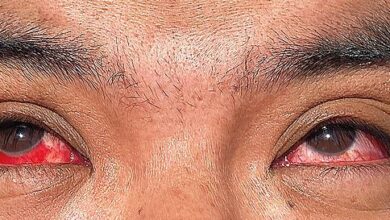Antibiotics prescribed to thousands of British patients can cause life-threatening skin rashes, scientists have discovered


Two commonly prescribed antibiotics can cause a painful, unsightly rash that, if left untreated, can lead to deadly sepsis.
The complications caused by the pills can lead to death in 20 to 40 percent of cases, according to a new 20-year study. They are prescribed to treat a variety of infections, including urinary tract infections and pneumonia.
Experts who conducted the study wrote in the journal JAMA Network that doctors would be better off using lower-risk alternatives.
For the study, doctors at the Sunnybrook Health Sciences Centre in Canada studied more than 100,000 patients over the age of 66 who were prescribed oral antibiotics. They also studied the harmful effects of the drugs.

Drug rashes – also known as serious cutaneous adverse drug reactions (cADRs) – are rare but life-threatening delayed reactions to certain medications
Over the 20-year study period, they found that 20 percent of the patient population visited the hospital for serious skin rashes, also known as cutaneous adverse drug reactions (cADRs).
The rash can occur immediately after taking medication, but also weeks later. Often the rash is the result of an allergic reaction.
Symptoms usually involve the skin, causing extremely red, scaly patches to appear all over the body. However, if left untreated, the condition can cause a dangerous overreaction of the immune system.
In rare cases, this leads to sepsis, where the immune system attacks itself, leading to multi-organ failure and sometimes death.
The Canadian researchers found that the antibiotics most likely to trigger this reaction were cephalosporins and sulfonamides – also known as ‘sulfa drugs’.
Next to penicillin, cephalosporins are among the most commonly prescribed antibiotics. They are used to treat pneumonia, meningitis, sepsis, and urinary tract infections.
The antibiotic is also commonly given to children who are allergic to penicillin, to treat ear infections.
Sulfa drugs are used to treat urinary tract infections, inflammatory bowel disease, malaria, and various skin, eye, and vaginal infections.
“Although rare, these serious drug reactions can be life-threatening,” said David Juurlink, an internist and chief of the Department of Clinical Pharmacology and Toxicology at Sunnybrook Health Sciences Centre.
‘Patients should be aware of rash, fever and other symptoms that may occur weeks after starting a course of antibiotics and even after the antibiotic has been stopped.
‘It is also one more reason why antibiotics should only be prescribed when they are really necessary.’
All antibiotics can cause a rash, as can anti-epileptic and anti-gout medications, and even over-the-counter medications like NSAIDs.
Although some patients experience severe reactions, the majority of rashes are treatable with medications.
“The good news is that most patients who came to the hospital with these reactions were discharged without hospitalization, which should be reassuring to providers and patients,” said Erika Lee, an allergist and intern with ICES and Temerty Medicine’s Eliot Phillipson Clinician-Scientist Training Program.
“But of those admitted to hospital with the most severe reactions, 20 percent were treated in intensive care. Five percent of the patients admitted died. This underscores the need for careful prescribing policies.”




